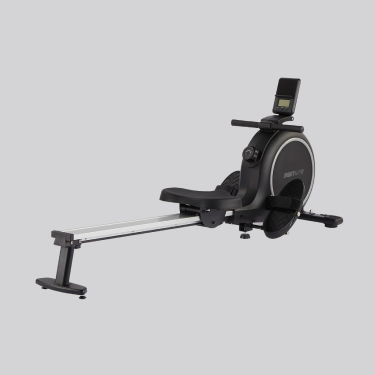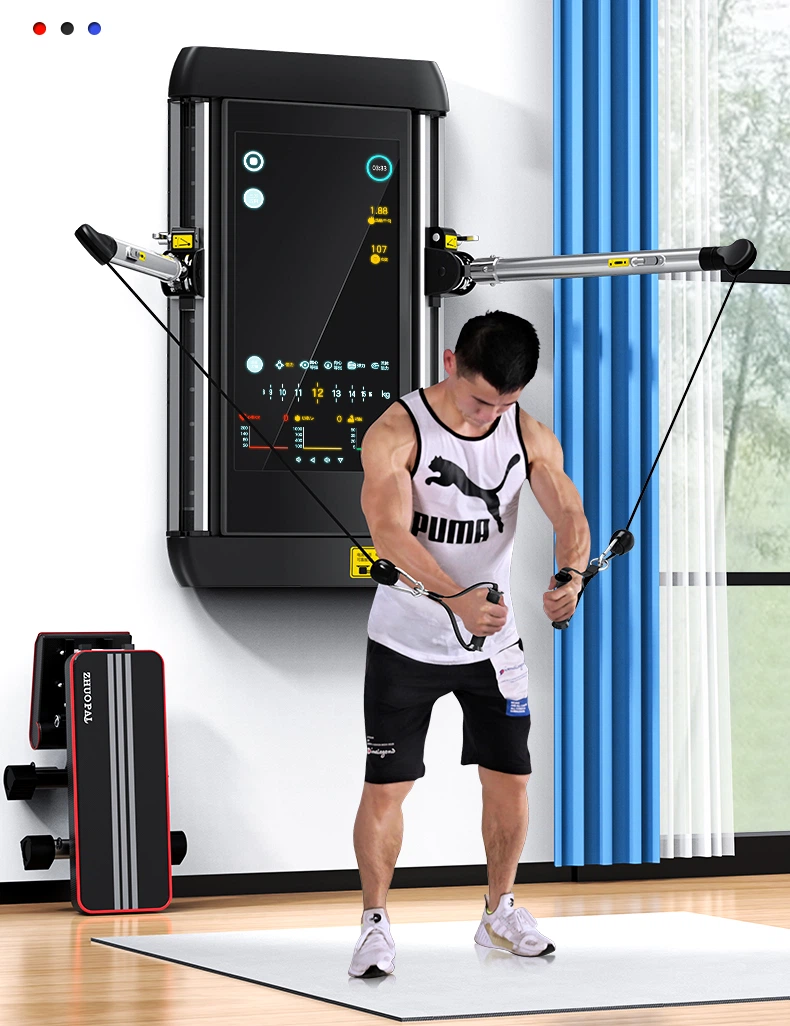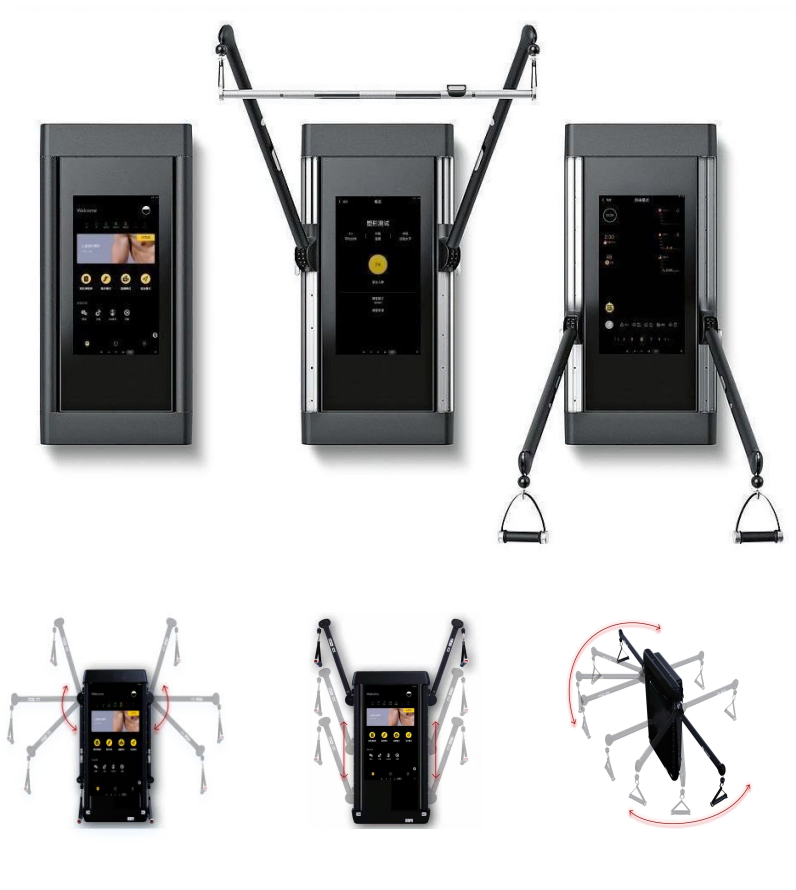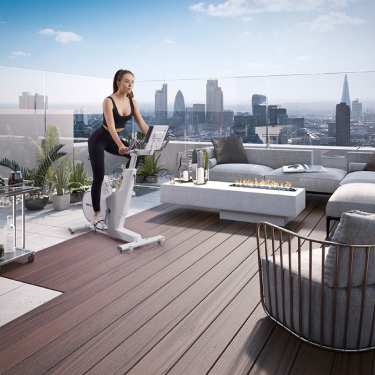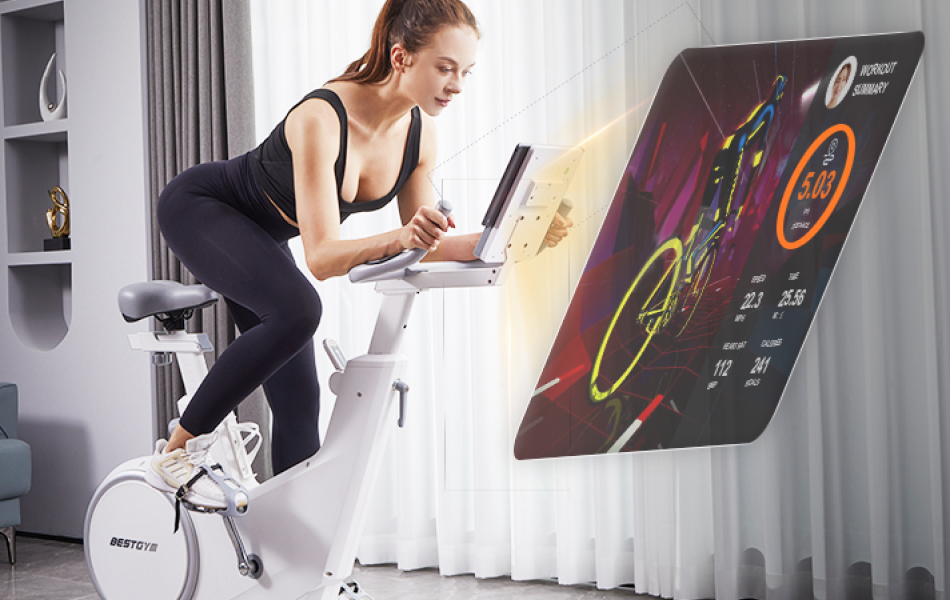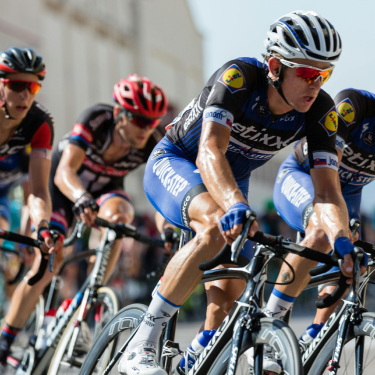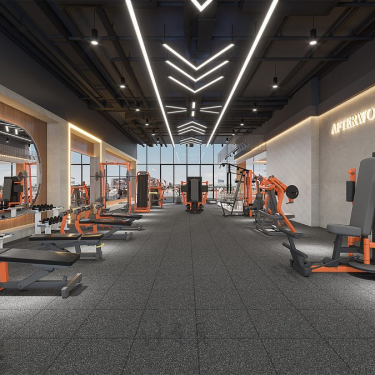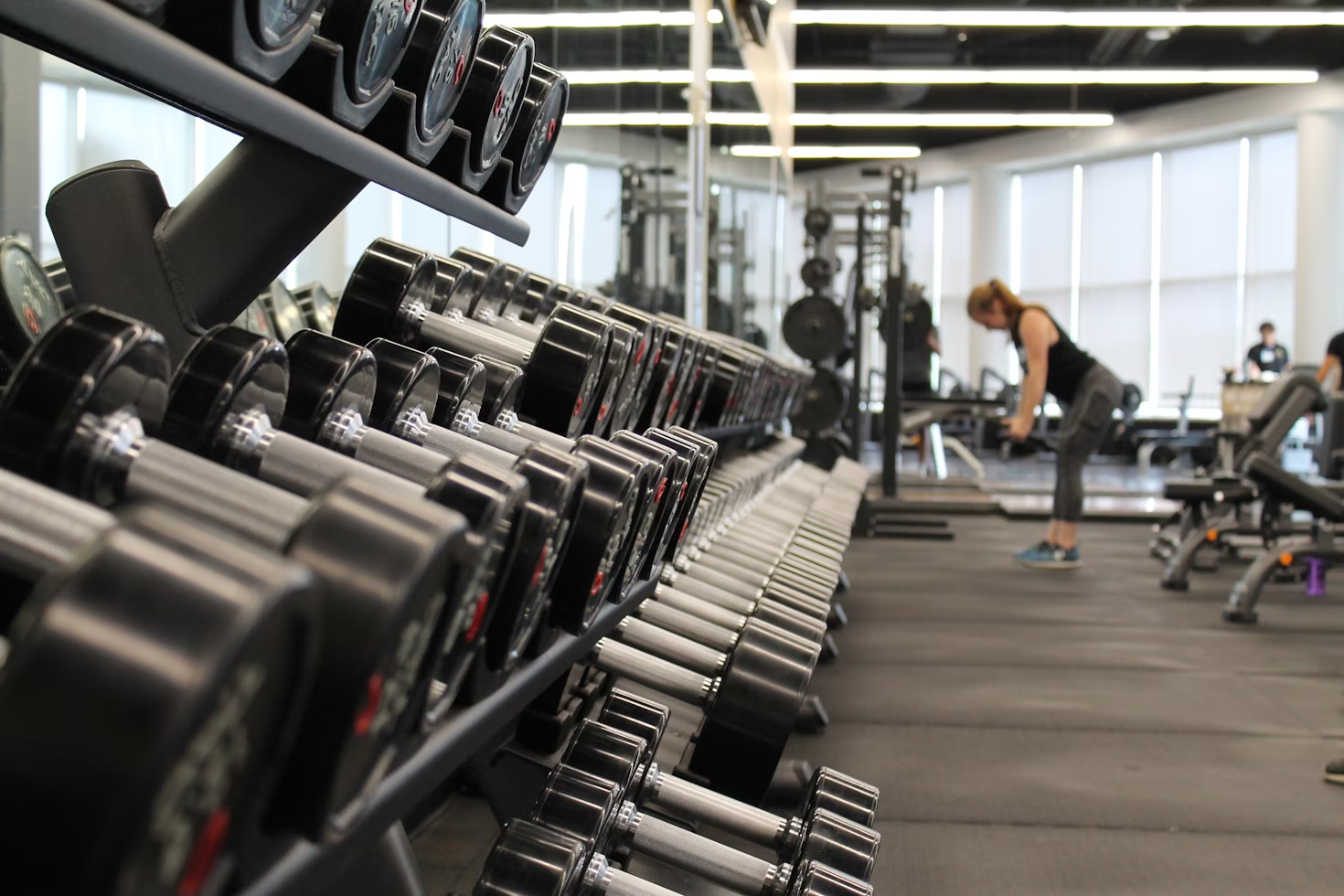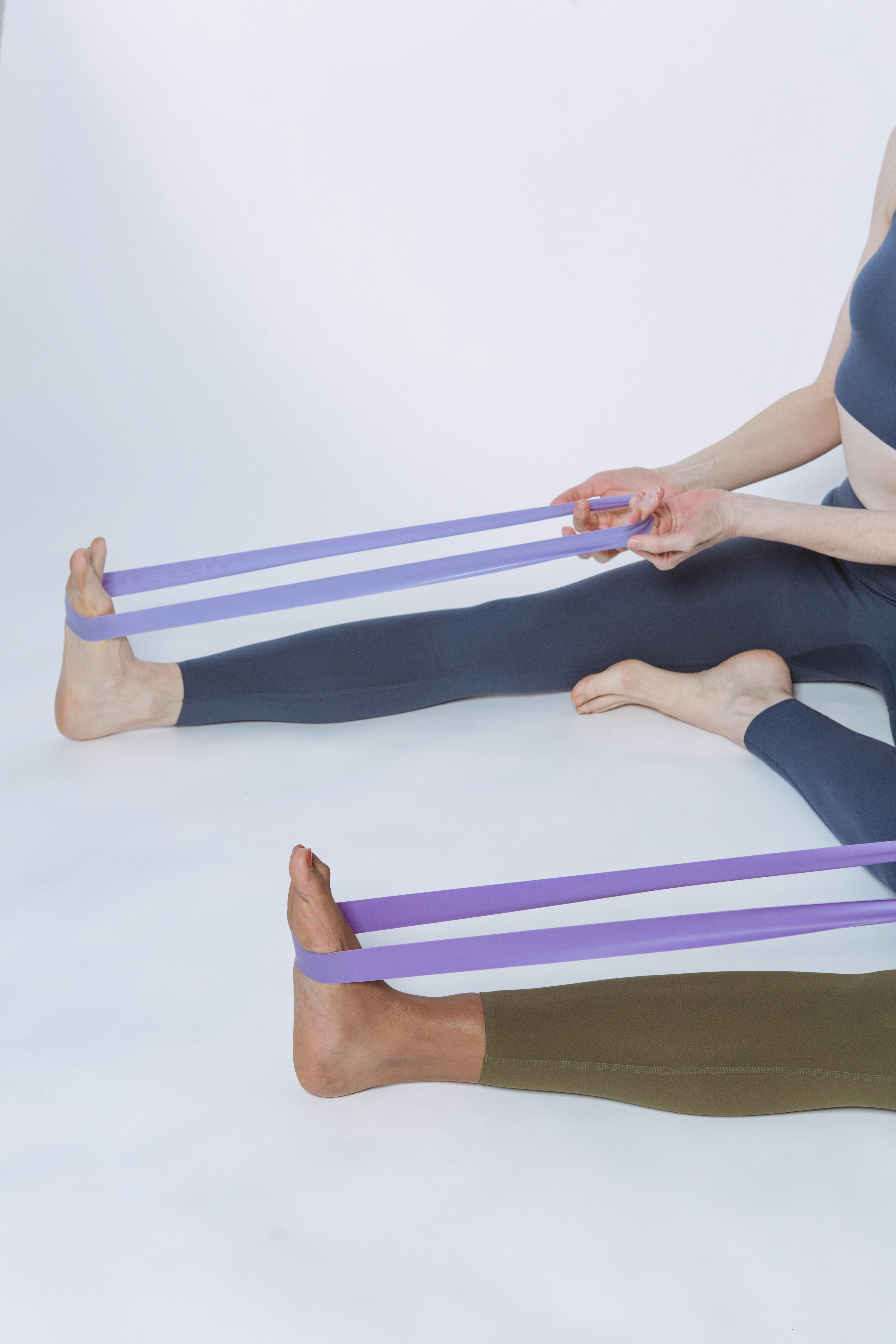Rowing Machine Definition: A Comprehensive Beginner's Guide
Rowing machines, often referred to as ergometers or simply ergs, have gained immense popularity in the fitness world due to their ability to provide a full-body workout. This comprehensive beginner's guide will delve into the various aspects of rowing machines, from their definition and history to their mechanics, benefits, and usage tips. By the end of this guide, you will have a thorough understanding of rowing machines and how to incorporate them into your fitness routine effectively.
Understanding Rowing Machines: What It Is and How It Works
A rowing machine, also known as an indoor rower, is a piece of exercise equipment designed to simulate the action of watercraft rowing. It provides a comprehensive workout, engaging multiple muscle groups, including the legs, core, and arms. The primary purpose of a rowing machine is to improve cardiovascular fitness and overall strength. The erg machine benefits users by providing a full-body workout that improves cardiovascular health, strengthens muscles, and enhances endurance.
Rowing machines are versatile and can be found in many gyms and home fitness setups. They come in various types, each offering a different resistance mechanism, which we'll explore in later sections. The primary components of a rowing machine include a sliding seat, footrests, a handlebar connected to a resistance mechanism, and a monitor that tracks performance metrics such as distance, time, and calories burned. 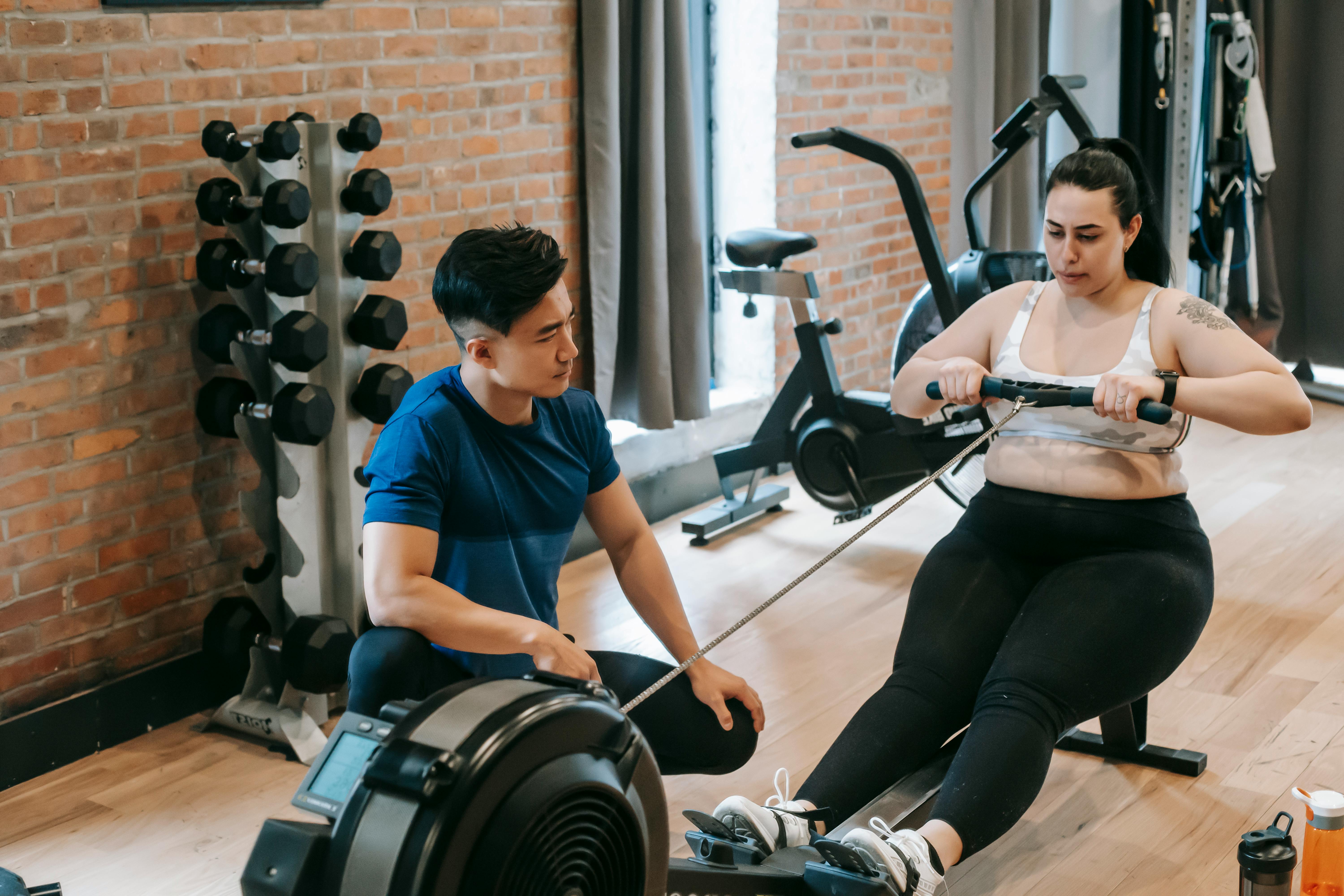
Rowing Machine Definition: A Journey Through Their History and Evolution
Rowing machines have a rich history, evolving from ancient Greek training tools for naval warfare to modern fitness equipment used worldwide. This journey showcases significant advancements in design and technology, transforming rowing machines from simple wooden contraptions to sophisticated devices featuring advanced resistance systems and materials. Today, they are a staple in both professional and recreational fitness routines, offering comprehensive full-body workouts.
- Ancient Beginnings: The concept of rowing machines can be traced back to the 4th century BC, where they were utilized by the Greek army. These early machines were designed to train soldiers for naval warfare, simulating the rowing conditions they would encounter at sea.
- 19th Century Innovations: The mid-19th century saw the advent of more recognizable rowing machines. These early versions were rudimentary, often constructed from simple materials, and used mainly by rowers during the off-season to maintain their fitness and technique.
- Mainstream Emergence in the 1980s: Significant advancements in the design of rowing machines occurred in the 1980s. This period marked the introduction of electronic monitors that could track performance metrics, making the machines more appealing to a broader audience. These innovations helped rowing machines gain mainstream popularity.
- Material Improvements: Originally, rowing machines were primarily made from wood and featured basic resistance mechanisms. Over time, the materials used in their construction have evolved to include more durable and lightweight options, such as high-grade metals and plastics.
- Advanced Resistance Systems: The development of sophisticated resistance systems has been a key factor in the evolution of rowing machines. Modern devices now feature:
- Air Resistance: Provides a realistic rowing feel and allows for smooth, variable resistance.
- Water Resistance: Mimics the natural dynamics of rowing on water, offering a smooth and consistent resistance.
- Magnetic Resistance: Offers a quiet and smooth rowing experience with adjustable resistance levels.
- Hydraulic Resistance: Compact and adjustable, suitable for home use where space is limited.
- Professional and Recreational Use: Today, rowing machines are used by both professional athletes and fitness enthusiasts. They are valued for their ability to provide a comprehensive, full-body workout, improving cardiovascular health, strength, and endurance.
- Integration in Fitness Routines: The versatility and effectiveness of rowing machines have led to their widespread incorporation into various fitness routines, from high-intensity interval training (HIIT) to steady-state cardio workouts.
The history of rowing machines is marked by continual innovation and adaptation. From their ancient origins to their modern-day sophistication, rowing machines have evolved to become an integral part of fitness training for individuals at all levels.
Read more: Rowing Exercise Machine: Which Muscles Are Worked?
How Does a Rowing Machine Work? Smart Rowing Machine Definition
Understanding the mechanics and working principles of rowing machines is crucial for maximizing their benefits. At its core, a rowing machine consists of a frame, a seat that slides along a rail, footrests, a handlebar, and a resistance mechanism. The user performs a rowing motion by pushing off with their legs, pulling the handlebar towards their torso, and then returning to the starting position. This motion is designed to replicate the feel of rowing on water.
Modern smart rowing machines are equipped with electronic monitors and connectivity features. These monitors track performance metrics such as stroke rate, distance, time, and calories burned, providing valuable feedback for users. Some smart rowing machines offer interactive features, such as virtual rowing courses, online competitions, and integration with fitness apps. These features enhance the rowing experience and help users stay motivated. Smart rowing machines often allow users to adjust resistance levels and customize workout programs. This personalization ensures that users can tailor their workouts to meet their specific fitness goals.
Key Components of a Rowing Machine: Brief Definition
- Frame: The backbone of the rowing machine, providing structure and stability. It supports all other components and ensures the machine remains steady during use.
- Seat: Mounted on a rail, the seat slides back and forth as the user rows. This sliding mechanism allows for the replication of the rowing stroke, engaging both the lower and upper body muscles.
- Footrests: Securely hold the user's feet in place, providing a stable base to push off from during the rowing motion. Adjustable foot straps ensure a snug fit for users of different sizes.
- Handlebar: Connected to the resistance mechanism, the handlebar is pulled towards the torso during the rowing stroke. It mimics the oar used in actual rowing, ensuring a realistic rowing experience.
- Resistance Mechanism: The core of the rowing machine's functionality, it provides the resistance that makes the workout challenging.
Mechanics of the Rowing Machine Motion
- Starting Position: The user sits on the sliding seat with feet strapped into the footrests and hands gripping the handlebar. The legs are bent, and the handlebar is pulled towards the front of the machine.
- Drive Phase: The user pushes off with their legs, extending them fully while keeping the core engaged. Simultaneously, the arms pull the handlebar towards the torso, engaging the back and arm muscles. This phase replicates the initial push in rowing, where the oars push against the water.
- Finish Position: The legs are fully extended, and the handlebar is pulled in close to the lower ribs. The user leans back slightly, engaging the core and maintaining proper posture.
- Recovery Phase: The user returns to the starting position by reversing the motion. The arms extend forward first, followed by the body leaning forward, and finally, the legs bending to bring the seat back towards the front. This phase prepares the user for the next stroke, ensuring a smooth and continuous rowing motion.
Understanding the mechanics and working principles of rowing machines is crucial for maximizing their benefits. At its core, a rowing machine consists of a frame, a seat that slides along a rail, footrests, a handlebar, and a resistance mechanism. The user performs a rowing motion by pushing off with their legs, pulling the handlebar towards their torso, and then returning to the starting position. This motion is designed to replicate the feel of rowing on water.
Rowing Machine Resistance Types: Air, Water, Magnetic, and Hydraulic
There are four main types of resistance mechanisms in rowing machines: air, water, magnetic, and hydraulic. Each type offers a different rowing experience:
- Air Resistance: This type uses a fan that spins as you row. The harder you row, the greater the resistance. It provides a smooth and dynamic resistance, closely mimicking the feel of rowing on water.
- Water Resistance: These machines use a water-filled tank to create resistance. The sensation of rowing is very realistic, as the resistance increases with the intensity of your strokes.
- Magnetic Resistance: Utilizing magnets and a flywheel, these machines offer a quieter operation and the ability to adjust resistance levels manually. They are ideal for those who prefer a quieter workout environment.
- Hydraulic Resistance: These machines use pistons filled with hydraulic fluid. They are typically more compact and less expensive but may not provide as smooth a rowing experience as air or water resistance models.
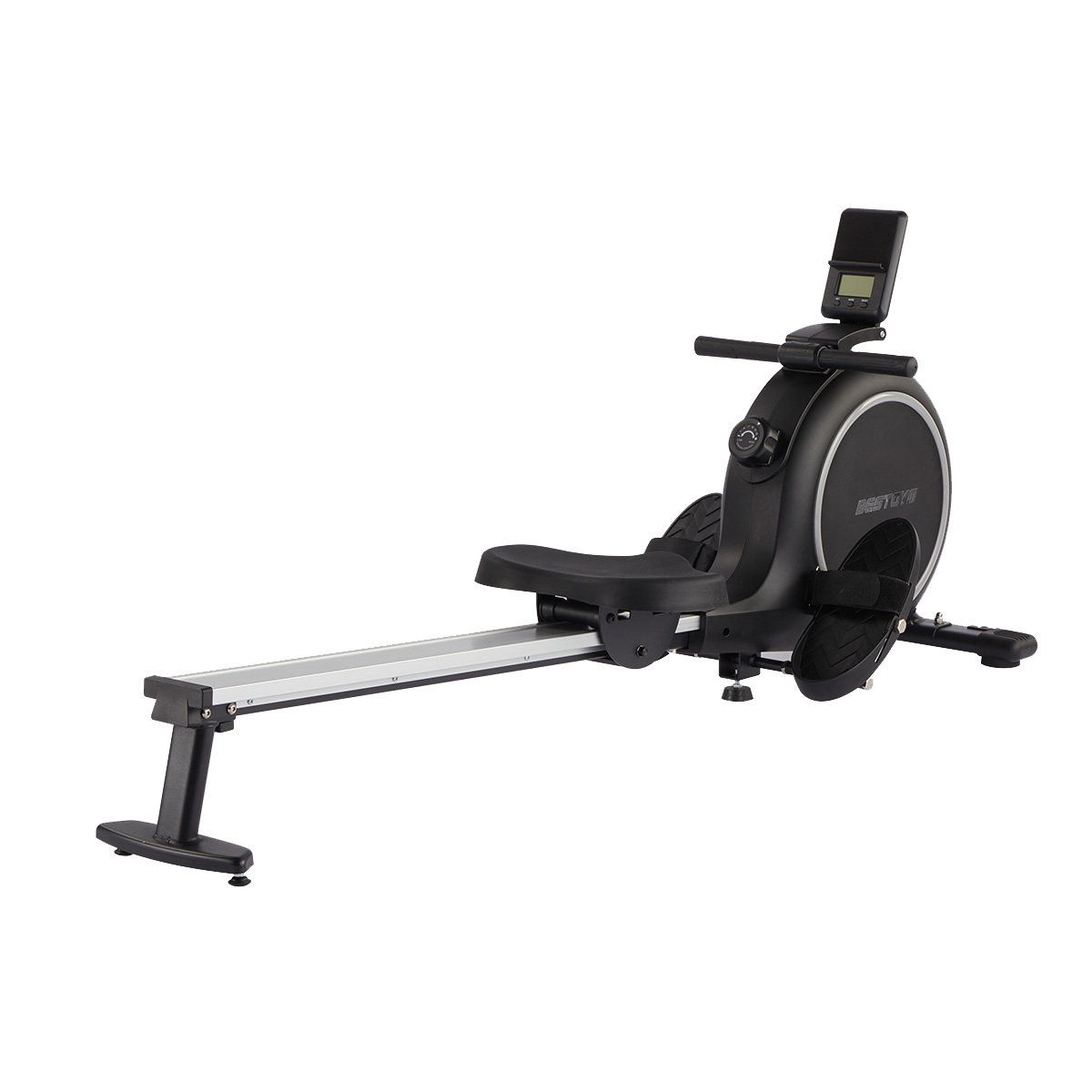
Design Features of Rowing Machines: What to Look For
When selecting a rowing machine, several design features can enhance your workout experience. Look for machines with adjustable footrests and a comfortable, ergonomic handlebar. The seat should glide smoothly and be comfortable for extended use. A robust performance monitor is essential for tracking progress and staying motivated. Additionally, consider the machine's storage capabilities; some models are foldable, making them ideal for home use with limited space.
1. Adjustable Footrests
- Customization and Comfort: Adjustable footrests are essential for accommodating different foot sizes and ensuring a secure fit. Proper alignment of the feet is crucial for maintaining form and preventing injury.
- Ease of Use: Look for footrests with easy-to-use adjustment mechanisms. Velcro straps or quick-release buckles can provide convenience and stability during intense workouts.
2. Ergonomic Handlebar
- Grip and Comfort: A comfortable, ergonomic handlebar reduces strain on the wrists and hands. It should have a non-slip grip to ensure stability, especially during vigorous rowing sessions.
- Natural Motion: The handlebar should facilitate a natural rowing motion, allowing the user to engage the upper body effectively without discomfort.
3. Smooth-Gliding Seat
- Comfort for Extended Use: The seat should be cushioned and contoured to support the user during long workouts. A well-designed seat can prevent discomfort and reduce the risk of pressure sores.
- Efficient Movement: The seat should glide smoothly along the rail, providing a seamless rowing experience. High-quality bearings and a sturdy rail are important for achieving smooth and consistent motion.
4. Performance Monitor
- Tracking Progress: A robust performance monitor is crucial for tracking workout metrics such as stroke rate, distance, time, and calories burned. This feedback helps users monitor their progress and set fitness goals.
- Advanced Features: Some monitors offer advanced features like heart rate monitoring, pre-programmed workouts, and connectivity to fitness apps. These features can enhance the training experience and provide additional motivation.
5. Resistance Mechanism
- Types of Resistance: Using a resistance rowing machine helps improve cardiovascular fitness while also strengthening muscles throughout the body. Different resistance mechanisms offer varied rowing experiences.
Air Resistance: Offers a realistic rowing feel with resistance that increases with rowing intensity.
Water Resistance: Mimics the natural dynamics of rowing through water, providing a smooth and consistent resistance.
Magnetic Resistance: Provides quiet and adjustable resistance levels, ideal for home environments.
Hydraulic Resistance: Compact and adjustable, suitable for users with limited space.
- Adjustability: The ability to adjust resistance levels is important for tailoring workouts to different fitness levels and training goals. 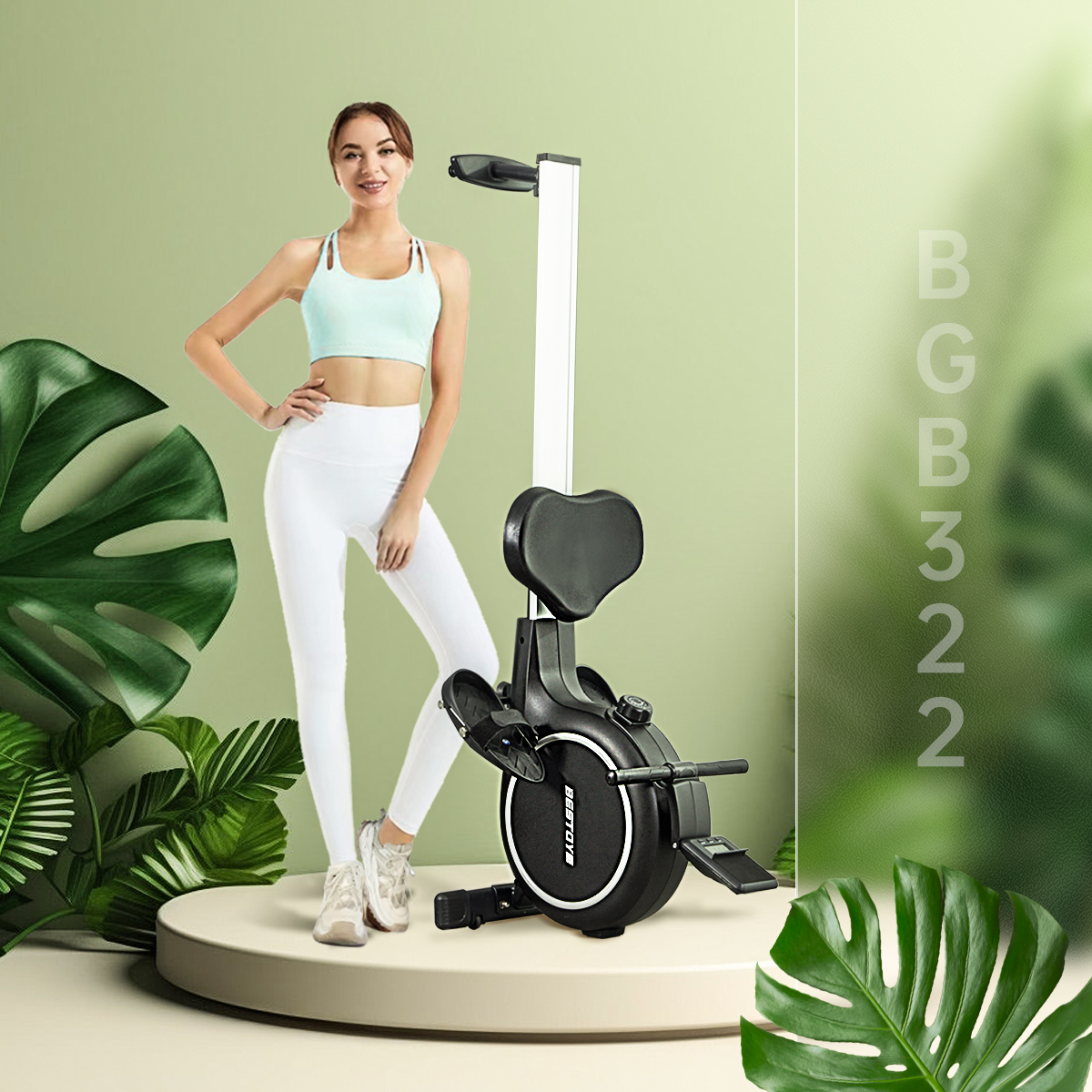
6. Storage Capabilities
- Foldable Designs: For those with limited space, consider rowing machines that can be folded and stored easily. Foldable models often feature a space-saving design, making them ideal for home gyms or small apartments.
- Portability: Some models come with wheels or handles that make moving the machine easier. This feature is useful for users who need to store their rowing machine out of sight when not in use.
7. Build Quality and Durability
- Materials: Look for rowing machines made from high-quality materials such as stainless steel or aluminum. These materials provide durability and longevity.
- Weight Capacity: Ensure the rowing machine can support your weight and accommodate your height comfortably. A sturdy frame and a high weight capacity are indicators of a well-built machine.
When selecting a rowing machine, several design features can enhance your workout experience. Look for machines with adjustable footrests and a comfortable, ergonomic handlebar. The seat should glide smoothly and be comfortable for extended use. A robust performance monitor is essential for tracking progress and staying motivated. Additionally, consider the machine's storage capabilities; some models are foldable, making them ideal for home use with limited space. By considering these factors, you can choose a rowing machine that meets your needs and helps you achieve your fitness goals effectively.
How to Use a Rowing Machine Properly? Beginner's Guide
Using a rowing machine properly is crucial to avoid injury and maximize benefits. Here's a step-by-step guide:
- Adjust the Footrests: Secure your feet with the straps.
- Grip the Handlebar: Hold it with both hands, keeping your grip relaxed.
- Starting Position (Catch): Sit with your knees bent, shins vertical, and arms extended forward.
- Drive Phase: Push off with your legs, extending them fully while pulling the handlebar to your chest.
- Finish Position: Lean back slightly, keeping your core engaged, and hold the handlebar close to your chest.
- Recovery Phase: Extend your arms forward, bend your knees, and slide back to the starting position.
For beginners, it's essential to start with a slow and controlled pace. Focus on mastering the rowing stroke technique before increasing intensity. Begin with short sessions of 10-15 minutes and gradually increase duration and intensity as your fitness improves. Pay attention to your form, ensuring that your back remains straight and your core is engaged throughout the workout. Consider consulting a fitness trainer to perfect your technique.
What is the Benefit of a Rowing Machine? Health and Fitness Benefits
Rowing machines offer numerous health benefits, making them an excellent addition to any fitness routine. One of the standout advantages is that they provide a full-body workout, engaging the legs, core, back, and arms. This comprehensive engagement of multiple muscle groups means that you can achieve a balanced and effective workout with just one piece of equipment. Regular use of a rowing machine can lead to significant improvements in cardiovascular health. The rhythmic, aerobic nature of rowing enhances heart and lung function, contributing to better overall cardiovascular endurance and reducing the risk of heart disease.
In addition to cardiovascular benefits, rowing machines are highly effective for increasing muscle strength and endurance. The resistance mechanism of the rowing machine ensures that as you push with your legs and pull with your arms, your muscles are constantly working against resistance. This not only helps in building muscle strength but also improves muscular endurance, allowing your muscles to perform better over longer periods.
Promoting weight loss is another key benefit of using a rowing machine. The combination of cardiovascular exercise and resistance training leads to high calorie expenditure, which is crucial for weight loss. Engaging large muscle groups in a continuous, intense workout boosts metabolism and helps burn fat efficiently.
The low-impact nature of rowing makes it particularly suitable for individuals with joint issues or those recovering from injuries. Unlike high-impact exercises such as running, rowing minimizes stress on the joints, reducing the risk of injury while still providing a robust workout. This makes rowing an excellent option for older adults or those with conditions like arthritis, who need to stay active without exacerbating joint pain.
Fitness Benefits of Rowing Machines: Why They Are Great for Your Body
Rowing machines are highly effective for both cardiovascular and strength training. The continuous, rhythmic motion of rowing elevates the heart rate, enhancing cardiovascular fitness and endurance. The increased heart rate during rowing sessions leads to improved circulation and oxygen uptake, which are critical for maintaining heart health and overall vitality.
At the same time, the resistance provided by the rowing machine helps build and tone muscles, particularly in the legs, back, and arms. The drive phase of the rowing stroke engages the quadriceps, hamstrings, and glutes, while the pull phase works the back muscles, biceps, and shoulders. This dual-action ensures that you are not only improving your aerobic capacity but also developing muscular strength and definition.
Flexibility and coordination are additional benefits of regular rowing workouts. The full range of motion required for rowing—stretching forward, pulling back, and then returning to the start—improves joint flexibility and muscle elasticity. This can help reduce stiffness and increase the overall range of motion, making daily activities easier and reducing the risk of injury.
Coordination and balance are also enhanced through rowing. The synchronization required to execute the rowing stroke correctly—coordinating the push with the legs, the pull with the arms, and the body’s movement—improves neuromuscular coordination. This is beneficial not only for rowing but for overall motor skills and body awareness.
Moreover, rowing can have positive mental health benefits. The repetitive, meditative nature of rowing can help reduce stress and anxiety, promoting a sense of well-being. The endorphins released during aerobic exercise, such as rowing, can enhance mood and provide a natural boost to mental health.
In summary, rowing machines offer a versatile and comprehensive workout that benefits cardiovascular health, builds muscle strength, improves flexibility and coordination, and supports mental well-being. Whether you are looking to lose weight, tone your muscles, or simply maintain a healthy lifestyle, incorporating a rowing machine into your fitness routine can provide substantial, well-rounded benefits.
Who Should Use a Rowing Machine? Definition for Suitable Users and Scenarios
Rowing machines are versatile and suitable for a wide range of users. They are ideal for:
- Fitness Enthusiasts: Those looking to improve their overall fitness and add variety to their workouts.
- Professional Athletes: Rowers and other athletes can use rowing machines for off-season training and endurance building.
- Rehabilitation Patients: Individuals recovering from injuries or surgeries can benefit from the low-impact nature of rowing.
- Older Adults: The gentle, full-body workout is excellent for maintaining fitness without putting undue stress on the joints.
- Home Gym Users: Those with limited space can find compact, foldable models suitable for home use.
Rowing Machine for Home vs. Gym: Which is Better?
Choosing between a home rowing machine and using one at the gym depends on personal preferences and circumstances. Each option has its unique advantages and potential drawbacks. To make an informed decision, consider the following points: 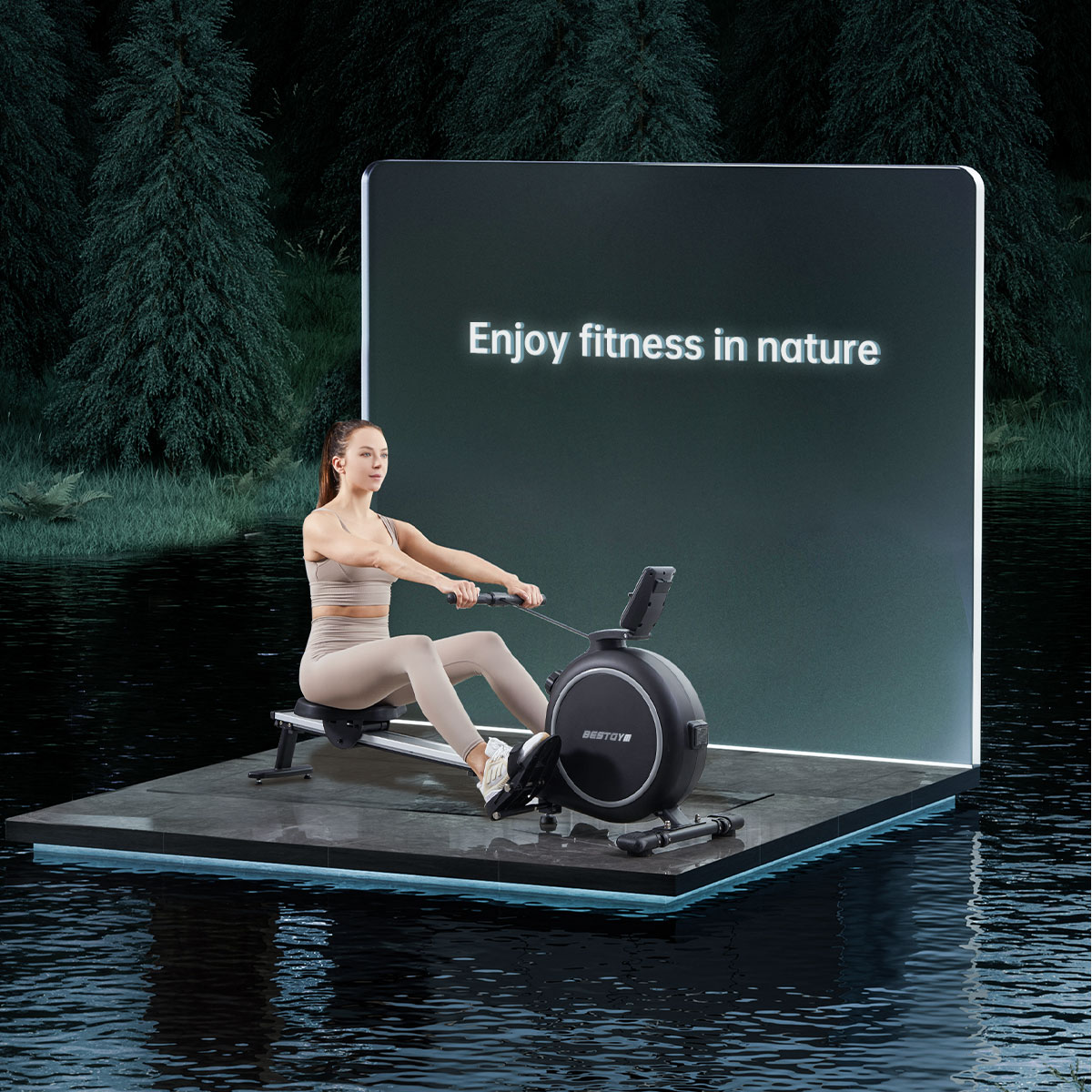
Home Rowing Machine: Convenience and Flexibility
1. Convenience:
- Anytime Access: One of the biggest advantages of owning a rowing machine at home is the ability to work out whenever you want. There's no need to travel to a gym or adhere to its operating hours.
- No Waiting: At home, you don’t have to wait for a machine to become available, ensuring that you can stick to your workout schedule without interruptions.
2. Privacy:
- Comfort of Home: Exercising in the privacy of your home can be more comfortable for many people, especially those who might feel self-conscious working out in a gym environment.
- Personal Space: You have control over your workout environment, including the ability to watch your favorite shows, listen to your own music, or set up a personal space that motivates you.
3. Cost Efficiency:
- No Membership Fees: While the initial investment in a home rowing machine can be significant, it eliminates ongoing gym membership fees. The static cycle price has become more affordable recently, making it easier for fitness enthusiasts to set up their own home gyms.
- Long-term Savings: Over time, the cost of a quality home rowing machine can be offset by the money saved from not having a gym membership.
4. Customization:
- Tailored Setup: At home, you can customize your workout area to fit your specific needs and preferences, including adding other fitness equipment and creating a dedicated exercise space.
- Family Use: A home rowing machine can be used by multiple family members, increasing its overall value and utility.
Gym Rowing Machine: Quality and Support
1. High-Quality Equipment:
- Professional Grade: Gyms typically invest in high-quality, commercial-grade rowing machines that may offer a smoother and more durable performance compared to many home models.
- Regular Maintenance: Gym equipment is regularly maintained by professionals, ensuring that it remains in optimal working condition and reducing the likelihood of breakdowns.
2. Variety of Equipment:
- Comprehensive Workouts: In addition to rowing machines, gyms offer a wide variety of fitness equipment, allowing you to complement your rowing workout with strength training, cardio machines, and other exercise options.
- Cross-Training Opportunities: Access to different types of equipment enables you to engage in cross-training, which can enhance overall fitness and prevent workout monotony.
3. Professional Guidance:
- Access to Trainers: Many gyms provide access to personal trainers who can offer guidance on proper rowing technique, create customized workout plans, and help you achieve your fitness goals more efficiently.
- Fitness Classes: Gyms often offer group fitness classes, including rowing-specific classes, which can provide motivation, social interaction, and a structured workout environment.
4. Social Environment:
- Community Feel: Working out in a gym can be a social experience, providing opportunities to meet like-minded individuals and benefit from the motivation that comes from being part of a fitness community.
- Support Networks: Engaging with other gym members and staff can provide encouragement and support, helping you stay committed to your fitness routine.
Which is Better?
Ultimately, the choice between a home rowing machine and using one at the gym depends on individual preferences, lifestyle, and fitness goals. Here are some considerations to help you decide:
- If you value convenience, privacy, and long-term cost savings, a home rowing machine may be the better option. It allows for flexible workout times and a comfortable, personalized exercise environment.
- If you prefer access to a wide range of high-quality equipment, professional guidance, and a social workout environment, a gym membership may be more suitable. Gyms offer the added benefits of regular equipment maintenance, fitness classes, and personal training services.
Consider your personal preferences, budget, and fitness needs when making your decision. Using a weight loss machine, such as a treadmill or rowing machine, can significantly enhance your fitness routine and help you achieve your health goals more efficiently. Both options can provide excellent workouts and contribute to your overall health and fitness, so choose the one that aligns best with your lifestyle and goals.
Choosing the Best Rowing Machine: A Buyer's Guide and Definition of Key Features
When selecting a rowing machine, consider the following factors:
1. Type of Resistance: Choose between air, water, magnetic, and hydraulic based on your preferences and budget.
2. Build Quality: Look for a sturdy frame and durable components that can withstand regular use.
3. Comfort and Ergonomics: Ensure the seat, handlebar, and footrests are comfortable and adjustable.
4. Performance Monitor: A good monitor should track essential metrics and possibly offer connectivity with fitness apps.
5. Storage: If space is an issue, consider a foldable model.
Price: Determine your budget and find a machine that offers the best value within that range.
How to Maintain Your Rowing Machine? A Comprehensive Definition
Regular maintenance is essential to ensure the longevity and performance of your rowing machine. Here are some tips:
1. Clean the Machine: Wipe down the frame, seat, and handlebar after each use to remove sweat and dust.
2. Inspect the Components: Regularly check the chain, handlebar, and footrests for wear and tear.
3. Lubricate Moving Parts: Apply lubricant to the chain or seat rail as recommended by the manufacturer.
4. Check the Resistance Mechanism: Ensure that the resistance system is functioning smoothly and adjust or replace parts as needed.
5. Store Properly: If your machine is foldable, store it in a dry, cool place when not in use.
To maintain your rowing machine effectively, follow the manufacturer’s maintenance schedule and guidelines. This includes periodic checks and servicing, especially for the resistance mechanism. For air and water rowers, ensure that the fans and water tanks are clean and free of debris. Magnetic and hydraulic rowers may require less frequent maintenance but still need regular checks to ensure all components are in good working condition.
Rowing Machine Workout Plans: From Beginner to Advanced
Creating a structured workout plan can help you achieve your fitness goals more effectively. Here’s a simple progression from beginner to advanced:
- Beginner: Start with 10-15 minutes of steady rowing at a moderate pace, focusing on technique. Gradually increase the duration as you build endurance.
- Intermediate: Incorporate interval training, alternating between 1 minute of high-intensity rowing and 2 minutes of low-intensity recovery for 20-30 minutes.
- Advanced: Aim for longer sessions of 45-60 minutes, mixing steady-state rowing with high-intensity intervals and strength training exercises like squats and push-ups.
BESTGYM home gym machines for sale offer high-quality equipment at competitive prices, perfect for creating a complete fitness setup at home. To get the most out of your rowing workouts, pay attention to your technique:
1. Maintain Good Posture: Keep your back straight and shoulders relaxed throughout the stroke.
2. Engage Your Core: Your core muscles should be actively engaged to support your movements.
3. Use Your Legs: Initiate the drive phase with a powerful push from your legs, then follow through with your upper body.
4. Control the Recovery: Don’t rush the return to the catch position; ensure a smooth and controlled recovery phase.
5. Breathe Properly: Exhale during the drive phase and inhale during the recovery phase to maintain a steady rhythm.
Explore our selection of premium rowing equipment for sale at BESTGYM. Whether you're a beginner or a seasoned athlete, our range includes top-of-the-line rowing machines designed to elevate your fitness routine. Each machine boasts ergonomic designs, advanced resistance systems, and intuitive features for an unparalleled workout experience. Discover the perfect addition to your home gym or fitness facility and achieve your fitness goals with confidence. Visit BESTGYM today and take the first step towards a healthier, stronger you.
Smart Rowing Machine Definition FAQs
Smart rowing machines represent the latest advancement in fitness technology, combining the traditional benefits of rowing with cutting-edge features designed to enhance the user experience. These machines offer real-time performance tracking, interactive training sessions, and personalized workout programs, making them an excellent choice for fitness enthusiasts of all levels. Here are some frequently asked questions about smart rowing machines to help you understand their features and benefits better.
1. What is a smart rowing machine?
A smart rowing machine is equipped with advanced technology, such as performance monitors, connectivity to fitness apps, and interactive features, enhancing the overall rowing experience.
2. How does a smart rowing machine differ from a traditional rowing machine?
Unlike traditional rowing machines, smart rowing machines offer features like real-time data tracking, personalized workout programs, and online connectivity for interactive training sessions.
3. What benefits do smart rowing machines offer?
Smart rowing machines provide comprehensive workout tracking, motivation through interactive features, and the ability to customize workouts to fit individual fitness goals.
4. Are smart rowing machines suitable for beginners?
Yes, smart rowing machines often come with beginner-friendly settings and guided workout programs, making them suitable for users of all fitness levels.
5. Do smart rowing machines require internet access?
While many features of smart rowing machines, such as online classes and app connectivity, do require internet access, basic rowing functions can still be used without it.
In summary, rowing machines offer a comprehensive and effective workout suitable for all fitness levels. By understanding their mechanics, history, and benefits, you can make informed decisions about incorporating rowing into your routine. Whether used at home or in the gym, rowing machines provide a full-body workout that enhances cardiovascular health, builds muscle, and promotes overall fitness. With proper technique, regular maintenance, and a structured training plan, you can maximize the benefits and enjoy a rewarding exercise experience.
Read more: Fitness Rowing Machines: Your Ultimate Guide to Effective Workouts 2024


